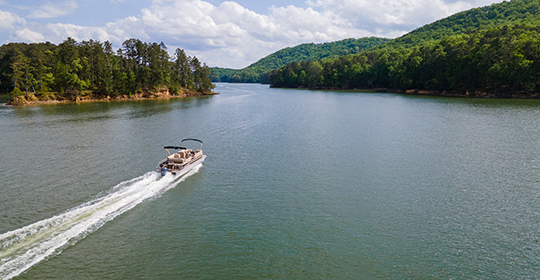4 Green Technologies in Boating for Environmental Sustainability
By Debbie Hanson
Feb 19, 2024
Summary of green technologies in boating, how to make sustainable boating decisions about hull design, outboard engines, bottom paint, cleaning products
People across the country are embracing the boating lifestyle in record numbers, which makes green technologies in boating more important than ever. Your boat engine, hull design, bottom paint, and boat cleaning products should be eco-conscious decisions whenever possible. Learn about a few advancements that contribute to sustainable boating practices and minimize environmental impacts on our waterways.
1. Electric Outboard Engines
Electric outboard engines provide a greener option over traditional gas-powered motors when powering a smaller boat (electric outboards typically range from 5 to 50 horsepower). Engines with electric propulsion may cost more initially than gas-powered outboard engines, but the long-term operation expense of an electric engine is lower. Electric engines are also quieter, emission-free, and there are no concerns about fuel spills. Most electric outboard engines use lithium batteries or batteries that can be charged by solar panels. Research electric outboard engines from companies like Elco or Mercury Marine. Hybrid-electric engines for larger boats may soon be on the market as well.
2. Energy Efficient Boat Design
Boats with an energy-efficient design produce fewer emissions, which contributes to sustainable boating. The use of lightweight hull materials (such as carbon fiber or Kevlar), energy efficient hull designs, and eco-friendly boating materials are becoming more common. When considering small recreational powerboats, a flat bottom hull design is the most efficient at getting up and staying on plane with the least amount of power in calm inland waters, while larger recreational boats with stepped-hull designs are efficient at high speeds in moderate to heavy seas.

3. Safer Anti-Fouling Bottom Paints
There are now safer alternatives to biocide and copper anti-fouling paints that are made for boats (copper anti-fouling bottom paints are banned in the state of Washington). New alternative anti-fouling paints solve the problem of biofouling by creating an ultra-smooth, slippery surface that algae and marine organisms can’t attach to. As a boater, do some research on the best type of bottom paint for your hull material and for the environmental sustainability in the waterways where you boat.
4. Non-Toxic Boat Cleaning Products
When it comes to reducing environmental impact of boating by using non-toxic cleaning products, there are plenty of options. Do some research on biodegradable boat cleaning products, use cleaning products sparingly, and prevent cleaning products from draining directly into the water. Use designated washdown areas at your marina or wash items down on a grassy area which can help absorb runoff before it ends up in a nearby lake or the ocean.
By using these green technologies in boating, you can save money while helping to protect our waterways for future generations.









